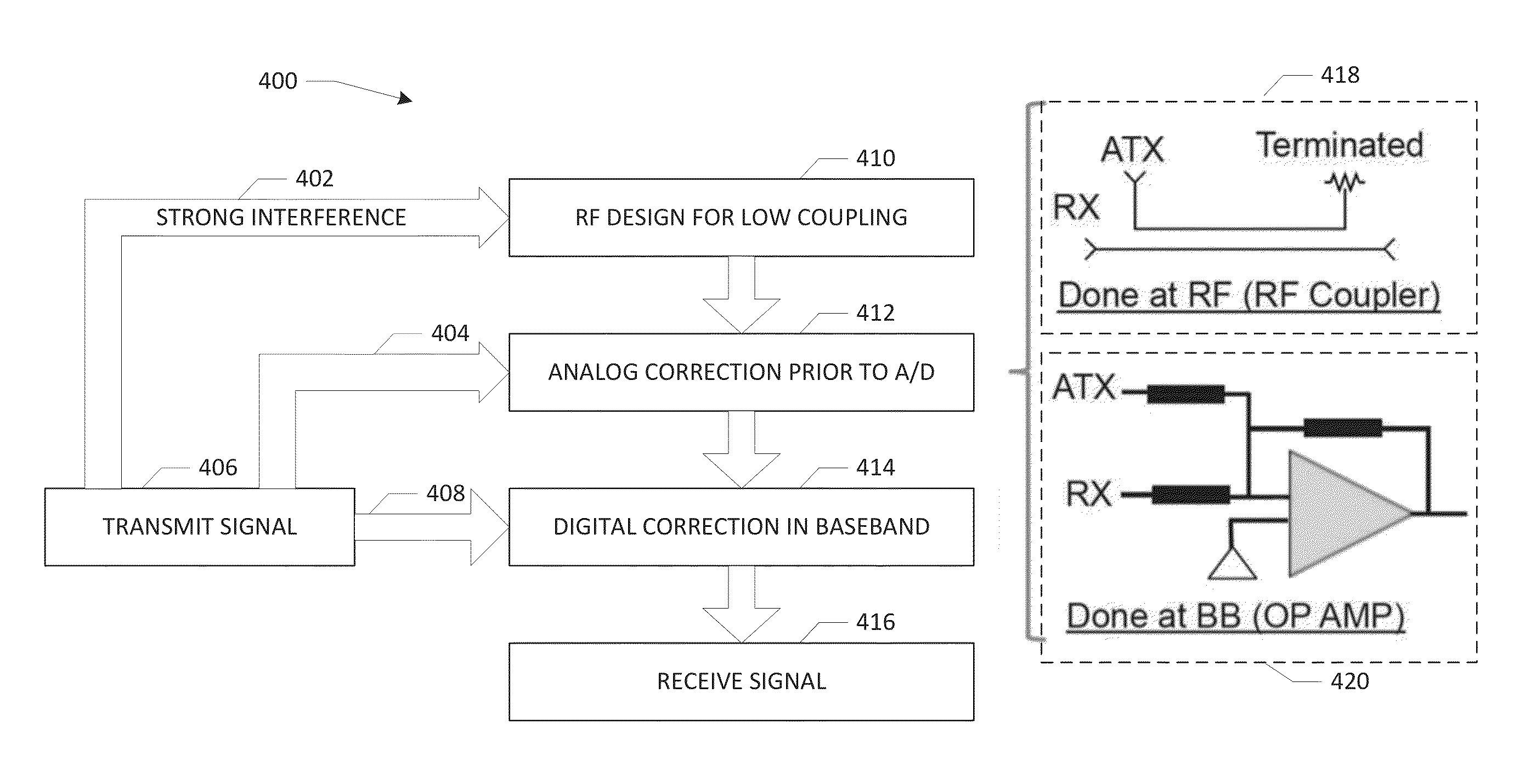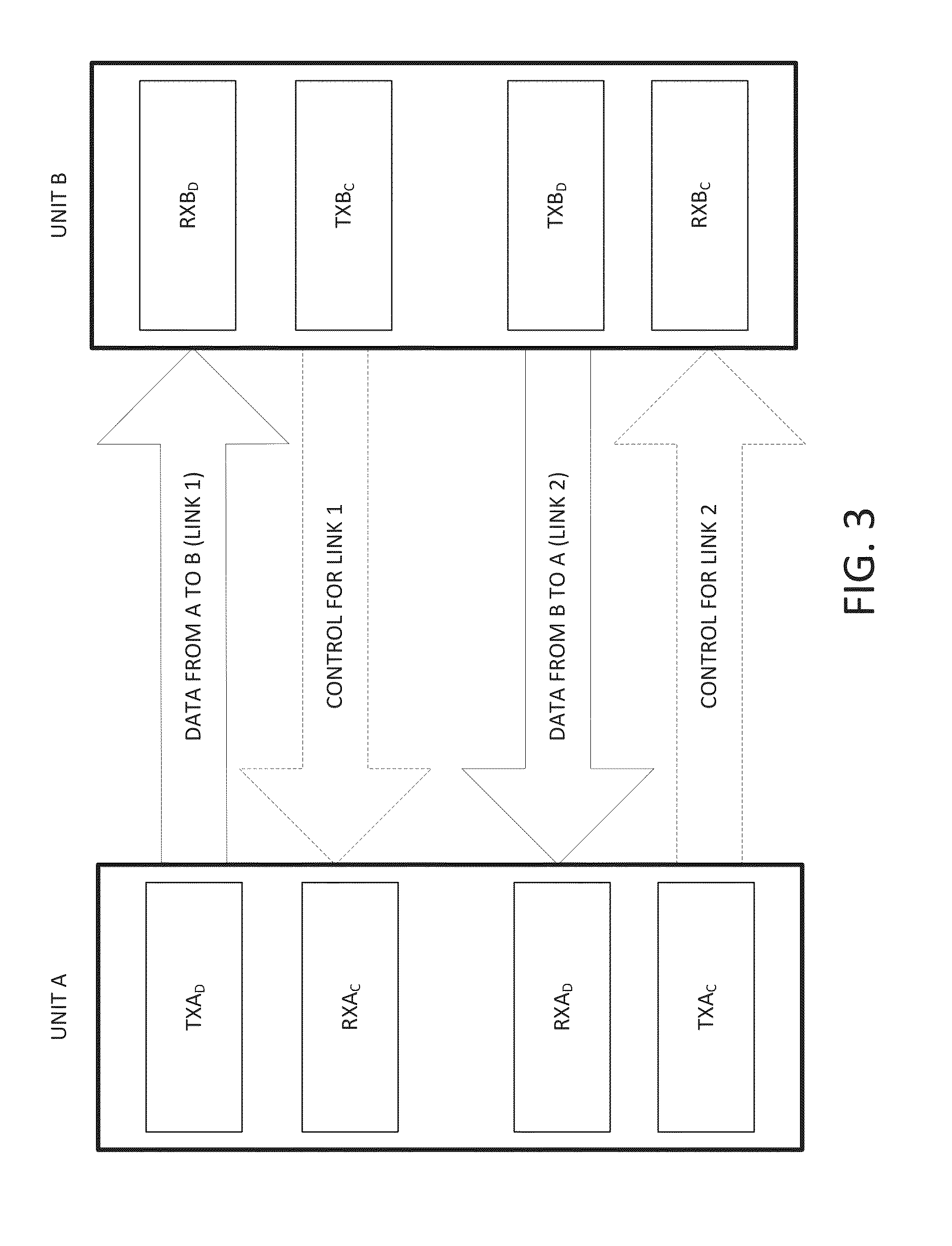Full Duplex Wireless Transmission with Self-Interference Cancellation
- Summary
- Abstract
- Description
- Claims
- Application Information
AI Technical Summary
Benefits of technology
Problems solved by technology
Method used
Image
Examples
embodiment 700
[0057]FIG. 7 depicts an alternative embodiment 700 of pre-processing the auxiliary transmit signal. In this embodiment, only the auxiliary transmit signal is preprocessed by preprocessor 704. The filter response used by preprocessor 704 is the negative ratio of the channel estimate (H1+ΔH1) for the primary self-interference channel H1 to the channel estimate (H2+ΔH2) for the self-interference cancellation channel response H2. After the combination of the self-interference signal from the primary transmit chain is combined with the preprocessed auxiliary transmit signal that traverses H2, a residual interference signal remains after the RF addition. This residual signal is separately measured at the receiver baseband processor, as described more fully below, and is referred to herein as the residual self-interference baseband channel response.
[0058]FIGS. 8 to 11 show block diagrams representing transmit and receive chains, in accordance with examples of embodiments of the full-duplex...
embodiment 800
[0065]In the embodiment 800 illustrated, the amplified signal from amplifier 804 is transmitted, via a pair-wise symmetrical transmit antenna whereas the amplified signal from amplifier 820 is output for combining with a received signal from a pair-wise symmetrical receive antenna of receiver 832 via RF coupling unit 834. A low noise amplifier 836 amplifies the combined received and injected signal. The amplified signal is demodulated (by demodulator 838) and analog to digital conversion is performed at A / D Unit 840. The digital signal is passed to FFT unit 842 and thereafter to RX base-band 844, which provides received data 848 and information (measurements) to weights calculation unit 846.
[0066]FIG. 9 depicts an embodiment where the received signal and the self-interfering signal are first amplified by LNA 906 before being combined with the self-interference cancellation signal from the auxiliary transmitter chain. In a further alternative embodiment, the LNA 904 may be omitted.
embodiment 1000
[0067]FIG. 10 depicts an embodiment 1000 where the auxiliary chain 1002 generates a self-interference cancellation signal in the form of an analog baseband signal, which is added in the received chain 1004 by baseband adder 1006.
PUM
 Login to View More
Login to View More Abstract
Description
Claims
Application Information
 Login to View More
Login to View More - R&D
- Intellectual Property
- Life Sciences
- Materials
- Tech Scout
- Unparalleled Data Quality
- Higher Quality Content
- 60% Fewer Hallucinations
Browse by: Latest US Patents, China's latest patents, Technical Efficacy Thesaurus, Application Domain, Technology Topic, Popular Technical Reports.
© 2025 PatSnap. All rights reserved.Legal|Privacy policy|Modern Slavery Act Transparency Statement|Sitemap|About US| Contact US: help@patsnap.com



